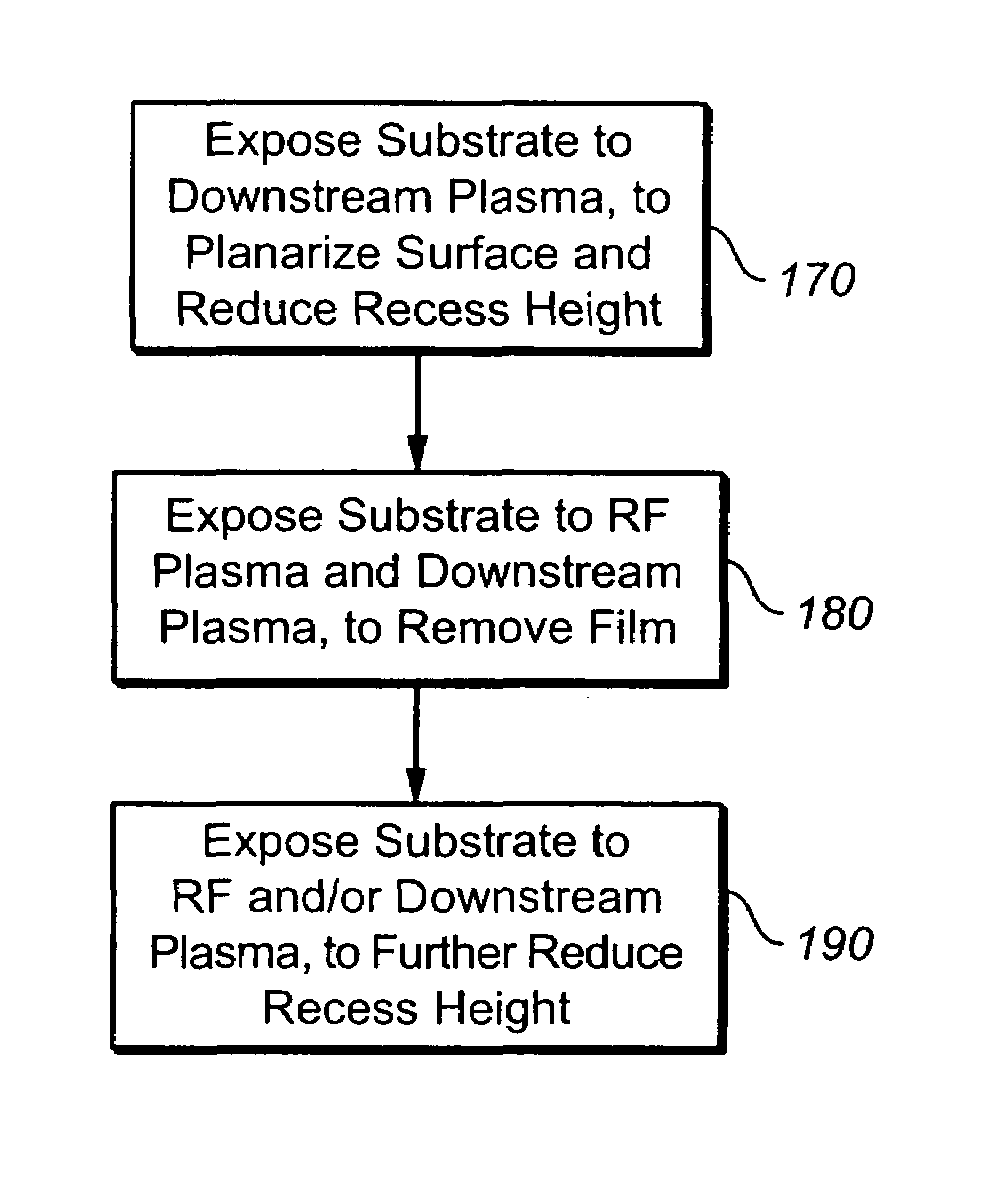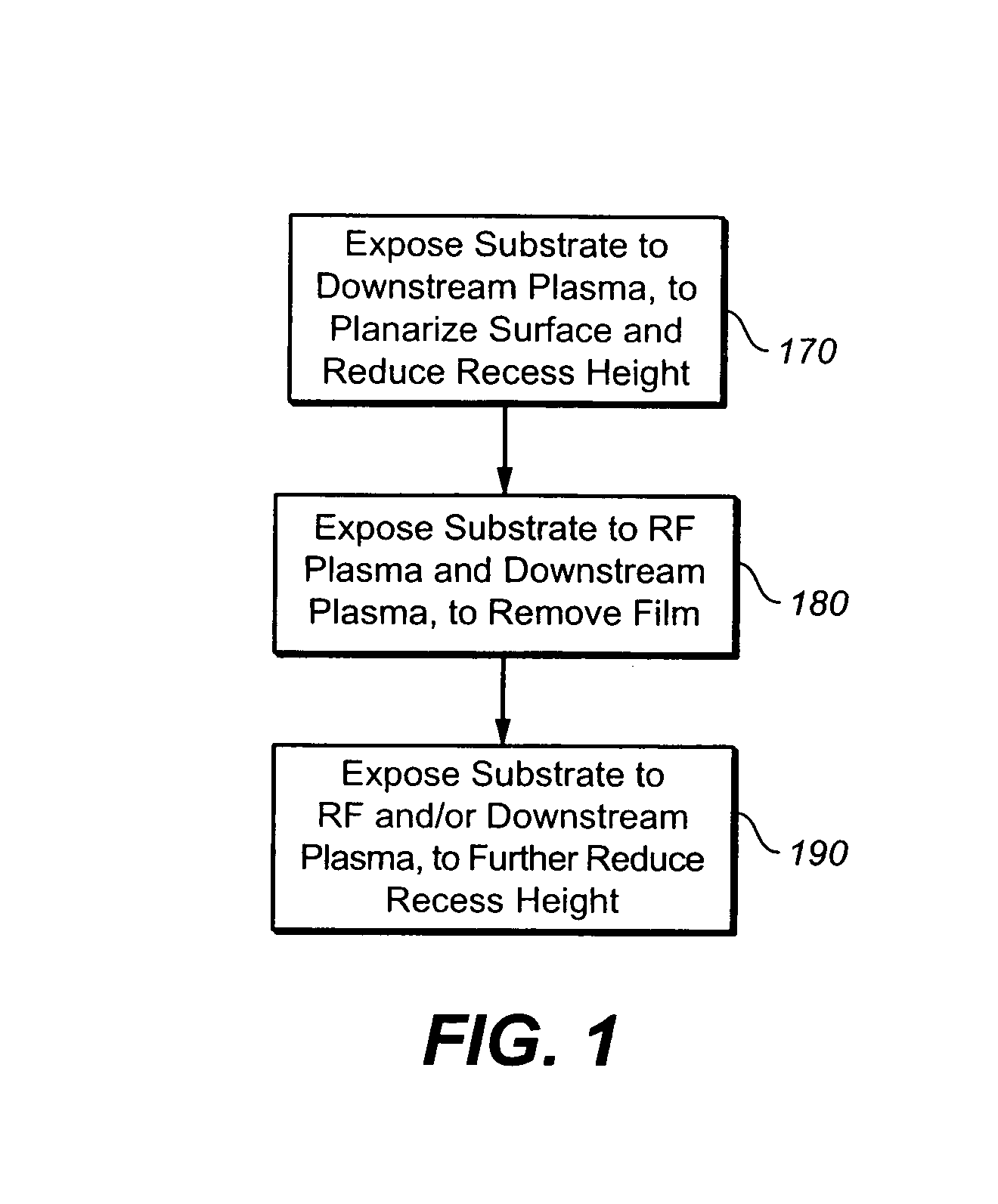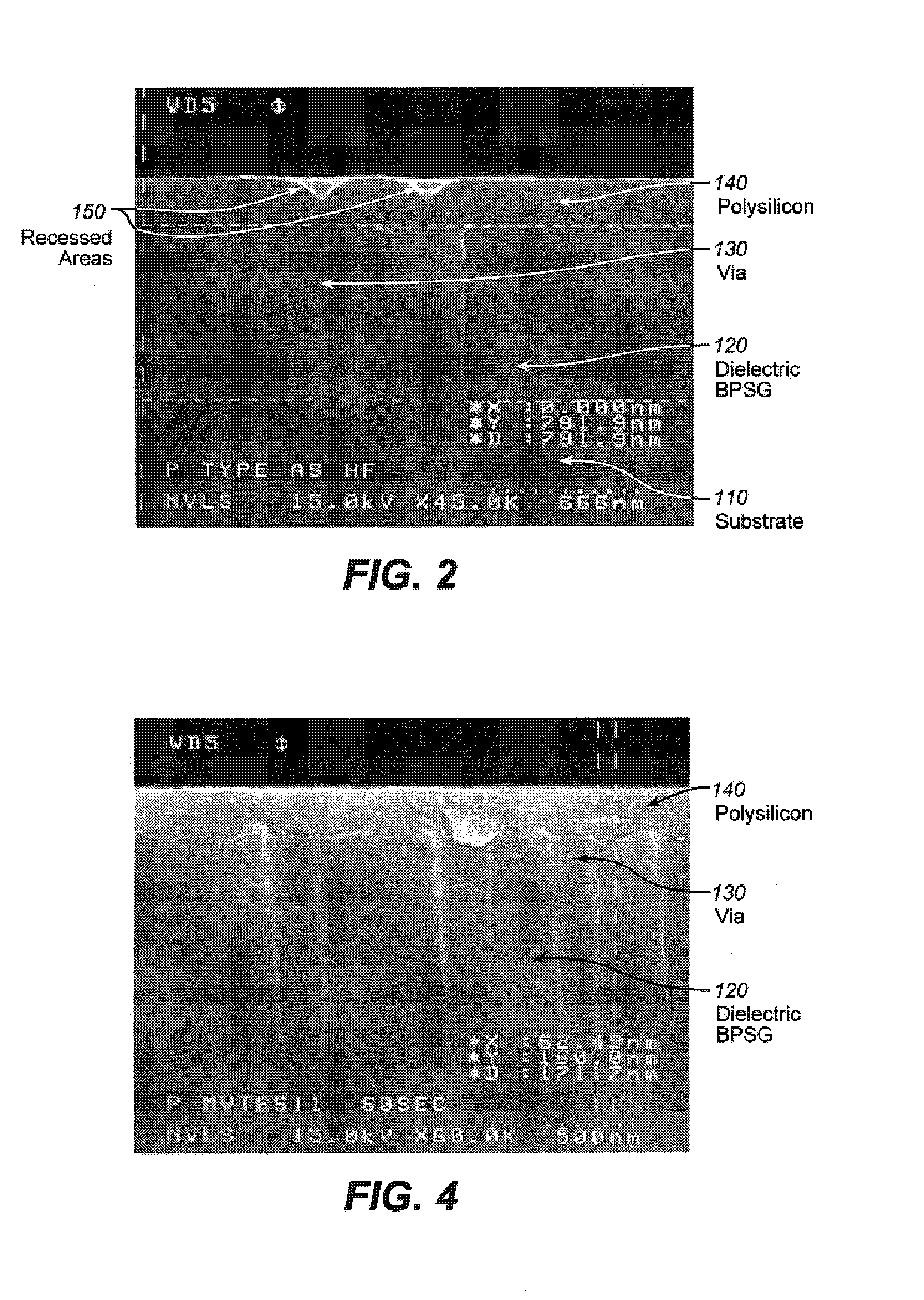Etch back process approach in dual source plasma reactors
a plasma reactor and etching process technology, applied in the direction of electrical discharge tubes, basic electric elements, electrical apparatus, etc., can solve the problems of frequent operator maintenance, yield loss from non-functional devices, and non-uniform surface with various dimple areas and depths
- Summary
- Abstract
- Description
- Claims
- Application Information
AI Technical Summary
Benefits of technology
Problems solved by technology
Method used
Image
Examples
Embodiment Construction
[0019]The novel process is one in which the surface of the substrate is first exposed to a downstream plasma, which serves to reduce the topography on the surface. After planarization, the substrate can be exposed to the normal etching processes, generally including a RF plasma source. By planarizing the film first, the invention avoids the problem wherein the film removal process preserves or enhances existing topography on the substrate surface.
[0020]FIG. 1 illustrates the novel process flow. According to the process flow, the wafer is first exposed 170 to a downstream plasma, to planarize the surface and reduce recess height. The downstream plasma source has the distinguishing feature that the plasma gases are required to cross a neutralizing barrier, which neutralizes through recombination, most of the ionized species in the gas. It has been found that among the effects of a downstream plasma on a substrate, is the general flattening of the topography of the surface. It is hypot...
PUM
| Property | Measurement | Unit |
|---|---|---|
| Temperature | aaaaa | aaaaa |
| Temperature | aaaaa | aaaaa |
| Temperature | aaaaa | aaaaa |
Abstract
Description
Claims
Application Information
 Login to View More
Login to View More - R&D
- Intellectual Property
- Life Sciences
- Materials
- Tech Scout
- Unparalleled Data Quality
- Higher Quality Content
- 60% Fewer Hallucinations
Browse by: Latest US Patents, China's latest patents, Technical Efficacy Thesaurus, Application Domain, Technology Topic, Popular Technical Reports.
© 2025 PatSnap. All rights reserved.Legal|Privacy policy|Modern Slavery Act Transparency Statement|Sitemap|About US| Contact US: help@patsnap.com



